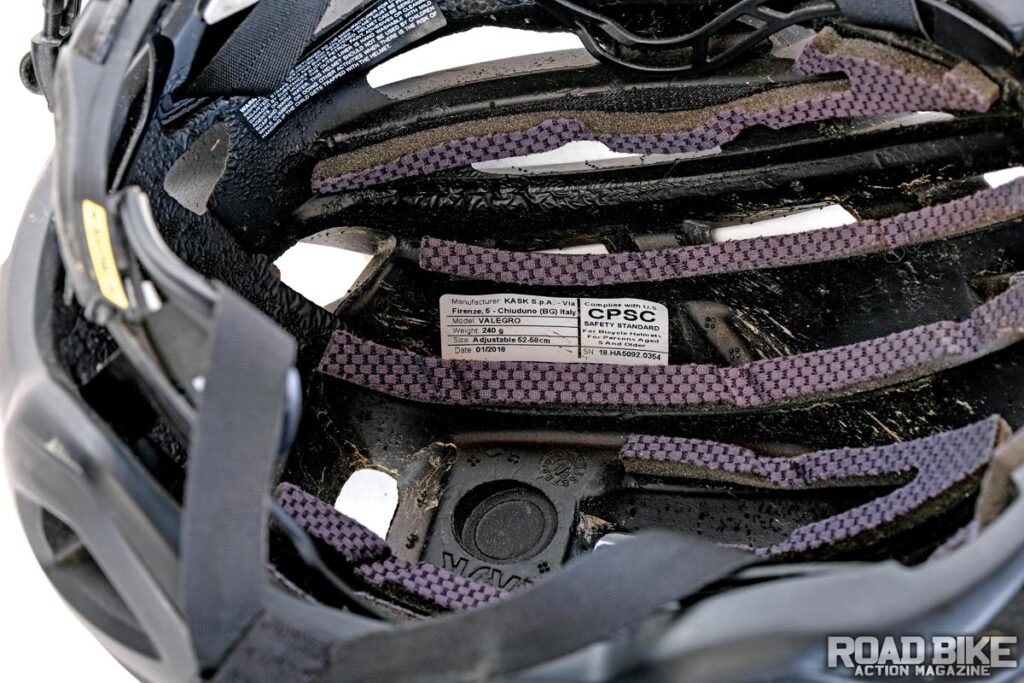Yes, bike helmets do expire. Most manufacturers recommend replacing them every 3 to 5 years.
Bike helmets are crucial for safety, but they don’t last forever. Over time, materials degrade, reducing their effectiveness. Regular wear and tear, exposure to sunlight, and sweat can also weaken the helmet. It’s essential to check for visible damage, like cracks or worn straps.
Investing in a new helmet every few years ensures maximum protection. Always follow the manufacturer’s guidelines for replacement. This habit can significantly enhance your safety while cycling. By staying informed and proactive, you ensure that your helmet provides the best possible protection in the event of an accident.
Introduction To Bike Helmet Expiry
Bike helmets are crucial for safety. They protect your head in accidents. Many people wonder if bike helmets expire. Helmets degrade over time. This can affect their safety. Knowing the expiry of a helmet is important.
Importance Of Helmet Safety
Helmets save lives. They reduce the risk of head injuries. An expired helmet might not offer enough protection. Helmets are made of materials like foam and plastic. These materials break down over time. This reduces the helmet’s ability to absorb impact. Always check your helmet’s condition.
Common Misconceptions
Many think helmets last forever. This is not true. Helmets usually last about five years. Some believe small cracks are harmless. Cracks weaken the helmet’s structure. Another myth is that helmets stored well last longer. Even unused helmets degrade. Always follow the manufacturer’s advice.

Credit: m.youtube.com
Factors Affecting Helmet Lifespan
Bicycle helmets don’t last forever. Various factors can affect their lifespan. Knowing these helps you stay safe. Below, we discuss some key factors.
Material Degradation
The materials in helmets degrade over time. Foam and plastic parts lose their effectiveness. This happens even if the helmet looks fine. The inner foam can compress and lose cushioning. The plastic shell can become brittle.
Manufacturers often recommend replacing helmets every five years. This is due to material degradation. Regular use can speed up this process. Always inspect your helmet for visible damage.
Exposure To Elements
Sunlight and moisture are enemies of helmet longevity. UV rays can weaken the helmet’s structure. Prolonged sun exposure can make the plastic brittle. Rain and sweat can degrade the foam padding inside.
Keep your helmet out of direct sunlight when not in use. Store it in a cool, dry place. Regular cleaning can also help. Use mild soap and water to clean the helmet. Avoid harsh chemicals that can damage materials.
| Element | Effect on Helmet |
|---|---|
| Sunlight | Weakens structure, makes plastic brittle |
| Moisture | Degrades foam padding |
| Heat | Can warp the helmet shape |
By understanding these factors, you can better care for your helmet. Ensuring your helmet’s longevity means ensuring your safety.
Signs Of Helmet Wear And Tear
Bike helmets keep your head safe. But they can wear out over time. Knowing the signs of wear and tear helps you stay protected.
Visible Cracks And Damage
Check your helmet for visible cracks. Small cracks can weaken your helmet. Look for dents or scratches. These can also be signs of damage. Use a bright light to inspect the helmet’s surface.
| Signs | Description |
|---|---|
| Cracks | Lines or splits on the helmet. |
| Dents | Indented areas that affect helmet shape. |
| Scratches | Surface marks that could weaken the helmet. |
Strap And Buckle Integrity
Examine the straps and buckles. They must be in good condition. Frayed straps can break easily. Test the buckle. It should lock securely and release without trouble.
- Check for frayed straps.
- Test the buckle for secure locking.
- Ensure the strap adjustment is firm.
Replace any worn straps or faulty buckles. They are key to helmet safety.
Manufacturer Guidelines
Understanding manufacturer guidelines is crucial for bike helmet safety. These guidelines help determine the lifespan and effectiveness of your helmet.
Recommended Replacement Period
Manufacturers usually recommend replacing bike helmets every 3 to 5 years. This period varies based on the brand and model. Always check the product manual for specific details.
| Brand | Recommended Replacement Period |
|---|---|
| Brand A | 3 years |
| Brand B | 5 years |
| Brand C | 4 years |
Factors like frequency of use and exposure to elements impact the lifespan. If a helmet has visible damage, replace it immediately.
Warranty Information
Most helmets come with a warranty that covers defects. The warranty period typically ranges from 1 to 3 years. Always register your helmet to activate the warranty.
- Brand A: 1-year warranty
- Brand B: 2-year warranty
- Brand C: 3-year warranty
Warranties do not cover wear and tear. They also do not cover damage from accidents. Review the warranty terms for your specific helmet model.
Impact Of Accidents On Helmets
Bicycle helmets are crucial for rider safety. Their integrity can be compromised after an accident. Understanding the impact of accidents on helmets is essential for maintaining safety.
Post-crash Inspection
After a crash, inspect your helmet thoroughly. Look for visible damage. Check for cracks, dents, or deformities in the outer shell. Examine the inner foam for compression or cracks.
Use a flashlight to inspect hard-to-see areas. Pay attention to the straps and buckles. Ensure they are intact and functional. A detailed inspection can reveal hidden damage.
Replacement After Impact
Helmets are designed to absorb impact energy. After a significant crash, replace your helmet. Even if there is no visible damage, the internal structure might be compromised.
Check the manufacturer’s guidelines for your helmet. Some recommend replacement after any impact. Others specify criteria for replacement. Adhering to these guidelines ensures maximum protection.
Replacing a damaged helmet can save your life. It is a small investment for safety. Always prioritize your safety by using an undamaged helmet.

Credit: roadbikeaction.com
Proper Helmet Maintenance
Maintaining your bike helmet is crucial for its longevity and effectiveness. Proper care ensures your helmet offers maximum protection during every ride. Below, we cover essential tips for cleaning and storing your helmet.
Cleaning Techniques
Regular cleaning keeps your helmet in top condition. Follow these steps:
- Use mild soap and warm water. Avoid harsh chemicals.
- Gently scrub the outer shell with a soft cloth.
- Remove the inner padding. Wash it separately.
- Rinse thoroughly to remove all soap residue.
- Let the helmet air dry. Avoid direct sunlight.
Cleaning your helmet removes dirt and sweat. This helps maintain its integrity.
Storage Tips
Proper storage extends your helmet’s lifespan. Follow these guidelines:
- Store your helmet in a cool, dry place.
- Avoid extreme temperatures. Heat can damage the helmet.
- Keep it away from chemicals and solvents.
- Use a helmet bag for extra protection.
- Avoid stacking heavy items on top of the helmet.
Proper storage helps your helmet retain its protective features.
Choosing A New Helmet
Choosing a new bike helmet can be a daunting task. Ensuring you pick the right one is crucial for your safety and comfort. In this section, we will cover key aspects to consider.
Safety Standards
Always check for the latest safety standards before buying a helmet. Look for certifications like CPSC, ASTM, or Snell. These certifications ensure the helmet meets rigorous safety tests. A certified helmet offers better protection in case of an accident.
Fit And Comfort
A helmet should fit snugly on your head. It should not move when you shake your head. Measure your head size and choose a helmet that matches. Use the adjustable straps and padding to get a secure fit.
Comfort is equally important. Look for helmets with good ventilation. Check for soft padding inside the helmet. A comfortable helmet encourages you to wear it every time you ride.

Credit: www.reddit.com
Frequently Asked Questions
Do Bike Helmets Have An Expiration Date?
Yes, bike helmets typically expire after 5 to 10 years. Material degradation and advancements in safety standards make replacement necessary.
How Often Should You Replace A Bike Helmet?
Replace your bike helmet every 5 to 10 years. Immediate replacement is needed after any significant impact or crash.
What Factors Cause Bike Helmets To Expire?
Factors include UV exposure, material degradation, and wear and tear. These factors reduce helmet effectiveness over time.
Can A Bike Helmet Be Used After A Crash?
No, a bike helmet should not be used after a crash. Even minor impacts can compromise its protective capabilities.
Conclusion
Regularly checking your bike helmet is crucial for safety. Helmets can expire due to wear and environmental factors. Replace your helmet every five years or after a crash. Stay protected by investing in a new, reliable helmet. Your safety on the road is worth the effort.
Keep cycling safely!


